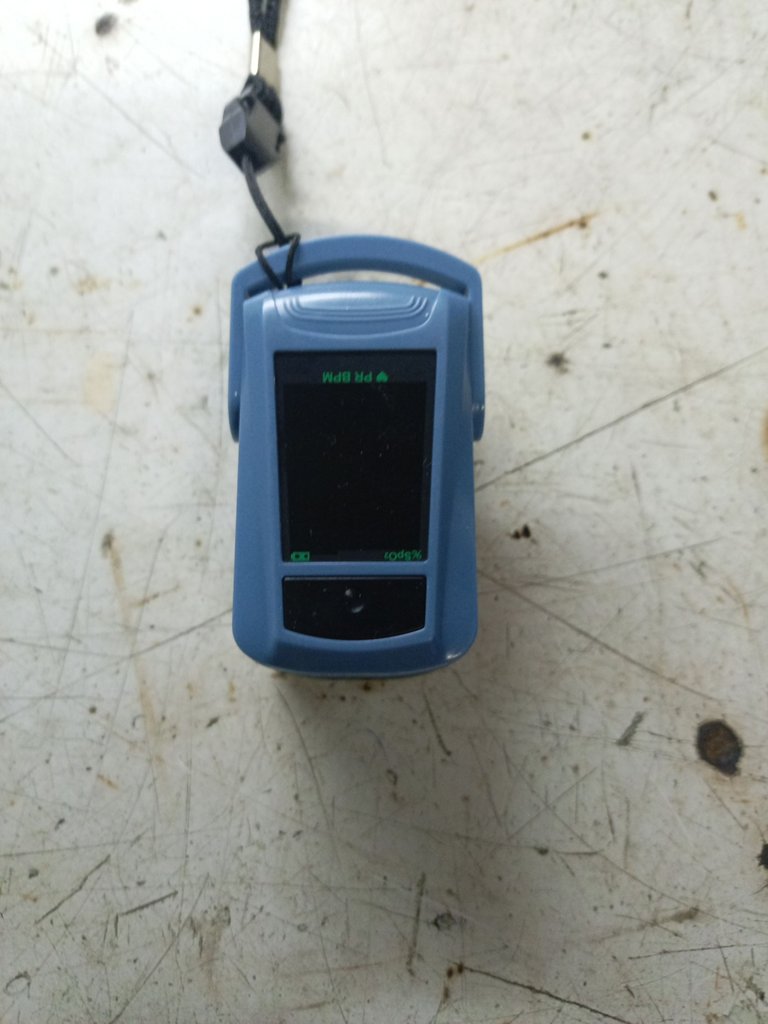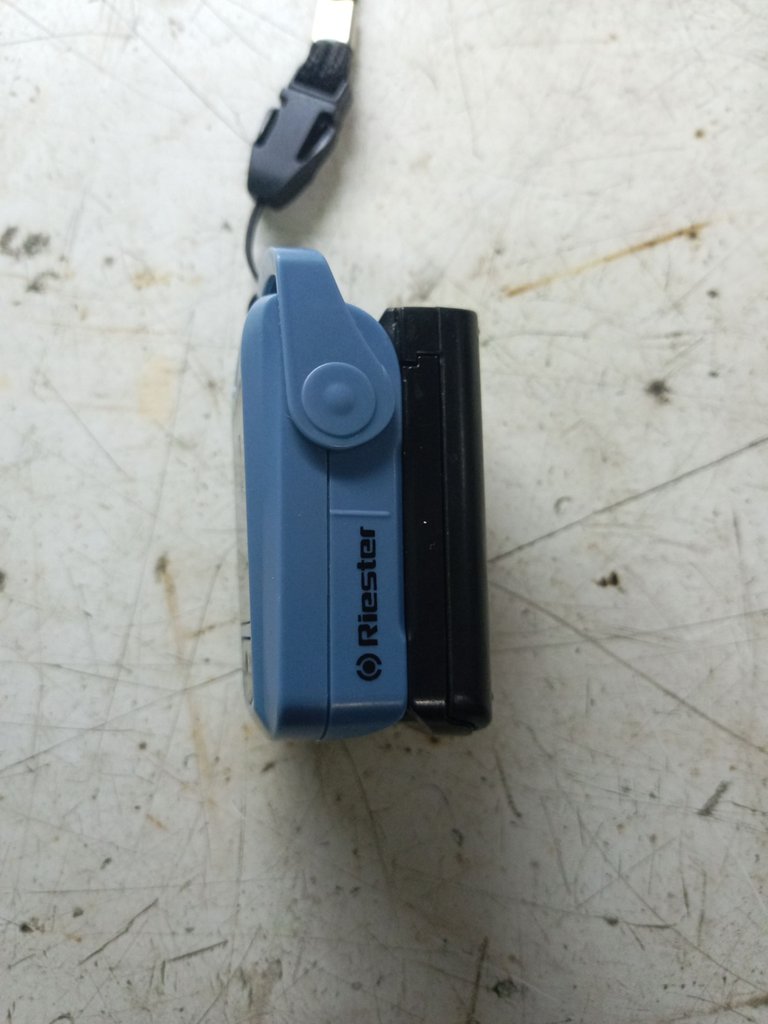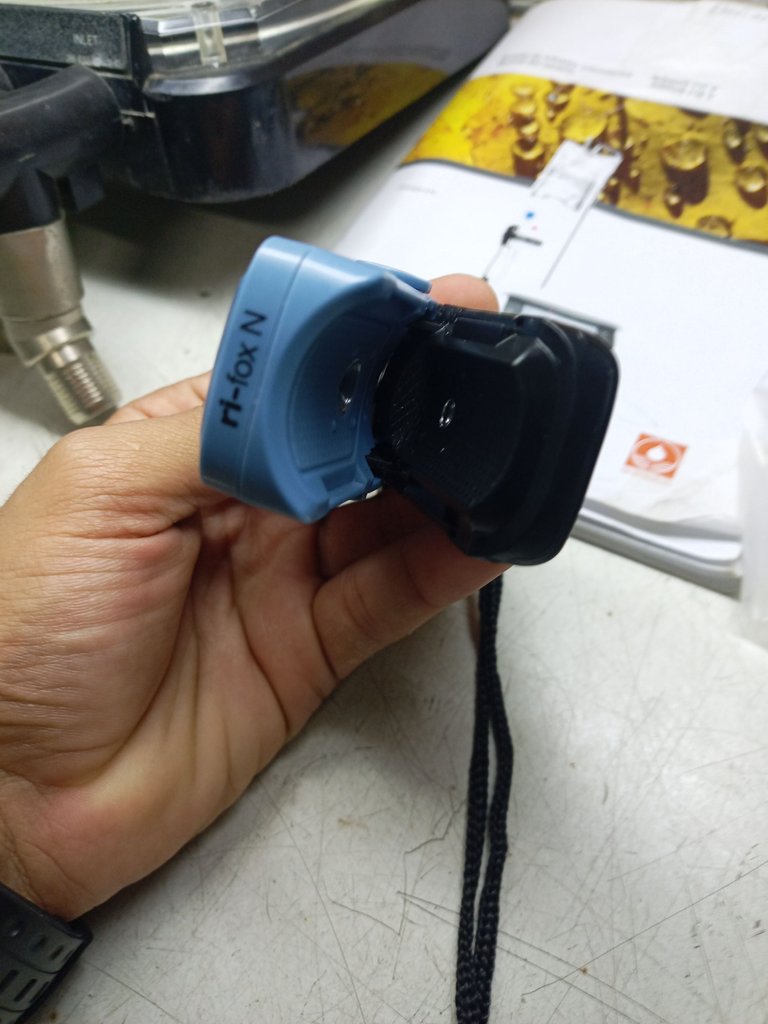
Oximetro de Pulso
Pulse Oximeter
Hola, hola amigos de la colmena, después de mucho tiempo sin publicar debido al tiempo que me exigía el trabajo, de nuevo vuelvo con más ánimo y con temas muy interesantes en cuanto a equipos médicos. Esta vez traigo el famoso pulsioxímetro o oxímetro de pulso, que se dio a conocer durante la pandemia del COVID-19, por su capacidad de medir la oxigenación en sangre.
Hello, hello friends of the hive, after a long time without publishing due to the time that the work demanded me, again I return with more encouragement and with very interesting topics regarding medical equipment. This time I bring the famous pulse oximeter or pulse oximeter, which became known during the pandemic of COVID-19, for its ability to measure oxygenation in blood.

Para entender este equipo y su función, primero debemos saber qué es la oxigenación en la sangre y cuáles son las repercusiones cuando los valores bajan.
To understand this equipment and its function, we must first know what oxygenation in the blood is and what the repercussions are when the values drop.
Debemos recordar que cuando inhalamos, nuestros pulmones absorben oxígeno (O2) y cuando exhalamos botamos dióxido de carbono (CO2), aunque este es un proceso más complejo nos vamos a quedar con esta idea para la explicación de este equipo. Si hay un desequilibrio en este proceso, es decir, se absorbe menos oxígeno y se exhala menos dióxido de carbono, es señal de que los pulmones no están funcionando correctamente y la forma de conocer el estado de los pulmones es a través de una gasometría (estudio intensivo) o un pulsioxímetro.
We must remember that when we inhale, our lungs absorb oxygen (O2) and when we exhale we exhale carbon dioxide (CO2), although this is a more complex process we are going to keep this idea for the explanation of this equipment. If there is an imbalance in this process, i.e. less oxygen is absorbed and less carbon dioxide is exhaled, this is a sign that the lungs are not functioning properly and the way to know the state of the lungs is through a blood gas (intensive study) or a pulse oximeter.

Los valores normales de oxígeno en sangre son de 75 a 100 milímetros de mercurio o 75-100mmHg, un oxímetro suele reflejarlo en porcentajes del 95% al 100%. Estos valores le indican al médico cuando los pulmones están funcionando correctamente y si los valores caen por debajo de la barrera de los 75mmHg o del 95%, el médico asume que hay una condición patológica por la cual el paciente no está recibiendo la oxigenación adecuada y ordenará una serie de estudios, entre ellos la gasometría arterial; Si estos valores caen por debajo del 95%, el paciente está presentando hipoxemia. Tener valores bajos genera un problema en las arterias en relación al sistema circulatorio y esto puede generar diferentes síntomas y desarrollar otras dificultades en el organismo.
The normal values of oxygen in the blood are from 75 to 100 millimetres of mercury or 75-100mmHg, an oximeter usually reflects it in percentages from 95% to 100%. These values indicate to the doctor when the lungs are functioning correctly and if the values fall below the barrier of 75mmHg or 95%, the doctor assumes that there is a pathological condition for which the patient is not receiving adequate oxygenation and will order a series of studies, including arterial blood gases; If these values fall below 95%, the patient is presenting hypoxaemia. Having low values generates a problem in the arteries in relation to the circulatory system and this can generate different symptoms and develop other difficulties in the organism.
Este aparato no sólo mide la oxigenación en la sangre, sino que también mide las pulsaciones por minuto o la frecuencia cardíaca, que es el número de latidos por minuto que realiza un corazón.
This device not only measures the oxygenation in the blood but also measures the beats per minute or heart rate, which is the number of beats per minute that a heart makes.

El pulsioxímetro o oxímetro de pulso hace uso de la espectrofotometría de luz visible, por lo que puede medir de forma no invasiva el valor de oxigenación en la sangre.
The pulse oximeter or pulse oximeter makes use of visible light spectrophotometry, so that it can non-invasively measure the oxygenation value in the blood.
El principio de funcionamiento de este equipo se basa en la emisión de una luz que pasa a través de células oxigenadas y no oxigenadas, cuando la luz pasa por una célula no oxigenada el nivel de absorción de la luz es menor y cuando pasa por una célula oxigenada el nivel de absorción es mayor, esta luz al llegar al receptor transmite rápidamente esta información al nodo central (microprocesador) donde se convierte en datos que pueden ser entendidos para dar un diagnóstico.
The principle of operation of this equipment is based on emitting a light that passes through oxygenated and non-oxygenated cells, when the light passes through a non-oxygenated cell the level of light absorption is lower and when it passes through an oxygenated cell the level of absorption is higher, this light on reaching the receiver quickly transmits this information to the central node (microprocessor) where it is converted into data that can be understood to give a diagnosis.

Este equipo consta de dos diodos, un diodo emisor (perceptible por la luz roja) y un diodo receptor (parece una bombilla LED sin iluminar); el sensor del pulsioxímetro se coloca en una región del cuerpo, como un dedo de la mano, del pie o del lóbulo de la oreja. El sensor transmite entonces dos longitudes de onda de luz a través de la piel (por ejemplo, 660 nm [rojo] y 930 nm [infrarrojo]). Por otro lado, según el modelo, dispone de un panel en el que se puede seleccionar el botón de encendido/apagado, así como seleccionar si desea medir sólo un valor, ya sea la frecuencia del pulso o la SaO2.
This equipment consists of two diodes, an emitting diode (noticeable by the red light) and a receiving diode (looks like an unlit LED bulb); the pulse oximeter sensor is placed on a region of the body, such as a finger, toe, or earlobe. The sensor then transmits two wavelengths of light through the skin (e.g. 660 nm [red] and 930 nm [infrared]). On the other hand, depending on the model, it has a panel where you can select the on/off button, as well as select whether to measure only one value, either pulse rate or SaO2.
¿Es lo mismo un pulsioxímetro que un sensor de SaO2 de Smartwhatch?
Is a pulse oximeter the same as a Smartwhatch SaO2 sensor?
Actualmente muchos smartwatches vienen con un sensor de oxigenación sanguínea, la función de este es básicamente la misma que la del pulsioxímetro, solo que este utiliza la función de reflectividad, ¿cómo es esto? Pues bien, un diodo emisor (situado junto al diodo receptor) emite un pequeñísimo haz de luz infrarroja en un ángulo de 45 a 50 grados, para que luego rebote y el diodo receptor pueda recoger la señal de vuelta; la explicación es un poco más compleja pero en general funciona así.
Currently many smartwatches come with a blood oxygenation sensor, the function of this is basically the same as that of the pulse oximeter, only this uses the reflectivity function, how is this? Well, an emitting diode (located next to the receiving diode) emits a very small infrared light beam at an angle of 45 to 50 degrees, so that it then bounces and the receiving diode can pick up the signal back; the explanation is a little more complex but in general it works like this.

Los smartwatches que cuentan con este sensor tienen un gran problema, ya que estos sensores son muy sensibles al ruido de la señal producido por los movimientos al medir la oxigenación. Esto se debe a que la muñeca no es el mejor lugar para registrar este valor, por lo que se recomienda permanecer quieto mientras se registra. Por otro lado, no se recomiendan para uso médico debido a su escasa precisión, incluso los propios fabricantes mencionan que son sólo para uso recreativo.
Smartwatches that have this sensor have a big problem, as these sensors are very sensitive to signal noise produced by movements when measuring oxygenation. This is due to the fact that the wrist is not the best place to record this value, which is why it is recommended to remain still while recording. On the other hand, they are not recommended for medical use due to their poor accuracy, even the manufacturers themselves mention that they are only for recreational use.
¿Por qué los pulsioxímetros portátiles tienen un valor diferente al de un monitor?
Why do portable pulse oximeters have a different value than a monitor?
Esta pregunta se la suelen hacer muchos médicos que pasan por las áreas de la Unidad de Cuidados Intensivos (UCI) y la Unidad de Cuidados Especiales (UCE). Esto se debe a que el rango previsto por los fabricantes siempre tendrá un margen diferencial con respecto a otros equipos del mismo rango, un ejemplo para que lo entiendas es que un pulsioxímetro portátil puede tener un valor de SaO2 del 96% en un paciente y el monitor puede tener un valor de SaO2 del 95%.
This question is often asked by many physicians who pass through the Intensive Care Unit (ICU) and Special Care Unit (SCU) areas. This is because the range intended by the manufacturers will always have a differential margin with respect to other equipment in the same range, an example for you to understand is that a portable pulse oximeter may have a SaO2 value of 96% in a patient and the monitor may have a SaO2 value of 95%.
Esta es siempre la razón por la que algunos especialistas médicos optan por el equipo de mano, pero hay que tener en cuenta que, al igual que los tensiómetros digitales, los equipos de oximetría de mano tienden a no medir si la batería está baja o su vida útil puede estar llegando a su fin.
This is always the reason why some medical specialists opt for the handheld, but it should be noted that like digital blood pressure monitors, handheld oximetry equipment tends to fail to measure if the battery is low or its life may be coming to an end.

Espero que les haya gustado este post, no olvidés votar, compartir y seguirme para estar al día de toda la nueva información que subo sobre equipamiento médico.
I hope you liked this post, don't forget to vote, share and follow me to keep up to date with all the new information I upload about medical equipment.
Este contenido es de mi autoría y mis imágenes son tomadas con un smartphone UMIDIGI A11 PRO MAX.
This content is authored by me and my images are taken with an UMIDIGI A11 PRO MAX.
El banner es de mi autoria, realizado en Picsart.
The banner is my own work, made in Picsart.
Enlaces de Interes / Links of Interest
Muy buena publicación, cuando participo en jornadas medicas generalmente cuantificamos la tensión arterial y usamos el oxímetro de pulso, honestamente no conocía como era el funcionamiento electrónico, muchas gracias por informar 😁😁😁.
Buen post amigo, que bueno que regresaste ✌🏽 saluditos
Muchas gracias 🤗🤗 querida amiga ♥️♥️
Saludos, en una información interesante y muy útil. Muchas gracias.
Al contrario gracias a ti por leer mi publicación 👍🏽
wow, this is great
Thanks to you, for taking a moment of your time to read my post.
Congratulations @josdad01! You have completed the following achievement on the Hive blockchain and have been rewarded with new badge(s):
Your next target is to reach 6000 upvotes.
You can view your badges on your board and compare yourself to others in the Ranking
If you no longer want to receive notifications, reply to this comment with the word
STOPTo support your work, I also upvoted your post!
Check out the last post from @hivebuzz:
Su post ha sido valorado por @ramonycajal